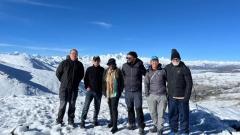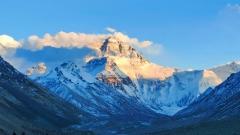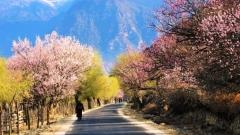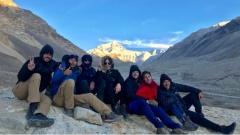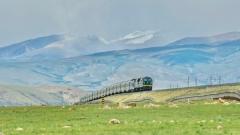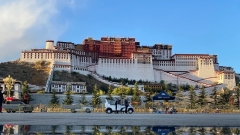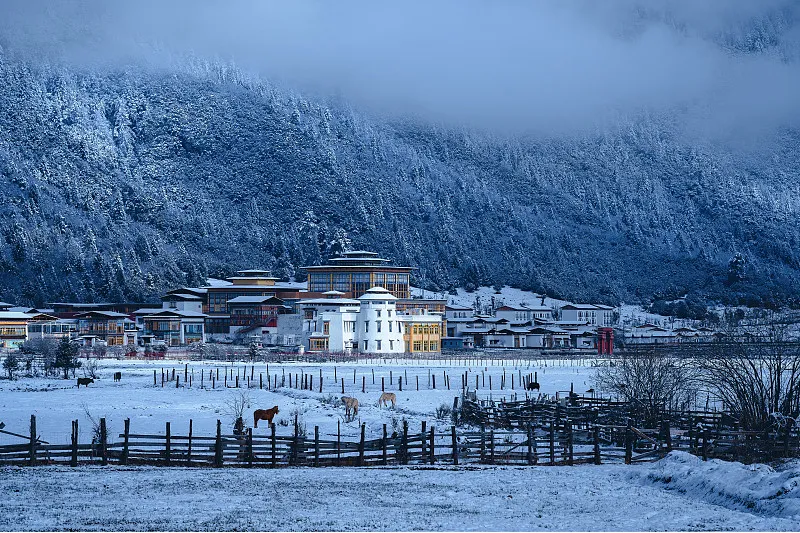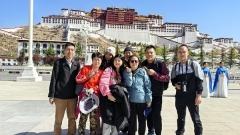Riding the Qinghai–Tibet Railway from Xining to Lhasa is more than a transfer: it’s one of the world’s great rail journeys. For international travelers who want an adventurous, scenic, and relatively gentle introduction to the Tibetan Plateau, the Xining → Lhasa trains Z8981 and Z8991 are the best choice.
Why Choose Xining as Your Rail Gateway to Lhasa?
Xining, capital of Qinghai Province, sits at the eastern foot of the Tibetan Plateau and functions as the operational gateway for the authentic Qinghai–Tibet Railway. Compared with starting points such as Beijing, Shanghai or Guangzhou, taking the train from Xining shortens the overland distance and travel time while keeping most of the spectacular plateau scenery intact. If your travel goal is to arrive in Lhasa rested, acclimatized gradually, and with a deep sense of place, the Xining → Lhasa trains are hard to beat.
Two regular services are marketed as the “true” Xining→Lhasa origin trains: Z8981 and Z8991. Each offers a slightly different timetable and visual experience, so your preferred departure time and the daylight-versus-nighttime windows will help decide which train to choose.
- Z8981 — daytime departure from Xining (midday), arrives in Lhasa the following morning; a longer timetable suited for travelers who want daytime views through much of the first day and an easy morning arrival.
- Z8991 — evening departure from Xining, runs into the second day with many of the plateau’s highlights visible on the second morning and afternoon; preferred by those who want to sleep shortly after departure and enjoy daylight approaching Lhasa.
Both trains cover the full Xining → Lhasa distance (about 1,950–1,960 km depending on the timetable version) and offer the same classes of accommodation: hard seat, hard sleeper, and soft sleeper. Prices and exact departure/arrival minutes can change seasonally, so booking well in advance is recommended during high season.
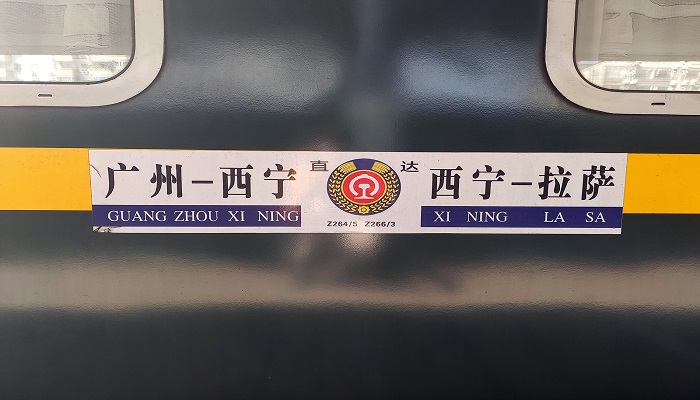
Xining → Lhasa Train Detailed Timetable Features
Both trains have slightly different rhythms and daylight coverage:
Z8981 — midday departure, morning arrival
- Departs Xining around midday. That means you will have the entire first afternoon and evening on board to watch the landscape change from highland plains to more barren, high-altitude vistas.
- Overnight on the train usually coincides with the higher-elevation section, so you sleep as the train climbs; you arrive in Lhasa the following morning, refreshed and with daylight for your first hours in the city.
Z8991 — late-evening departure, late-afternoon arrival
- Departs late evening, which is convenient if you prefer to board after a final day in Xining and sleep soon after departure.
- Some of the most dramatic sections (Tuotuo River, Tanggula, and upper plateau scenery) fall into the following daylight window, making the second day’s morning and afternoon prime time for photography.
- The arrival tends to be later in the afternoon or early evening, which suits travelers who prefer to arrive and settle in before the next day’s sightseeing.
Both schedules are used frequently by tour operators and independent travelers; choice comes down to your sleep preference and whether you want a morning or afternoon arrival into Lhasa.
| Field | Info |
|---|---|
| Train No. | Z8981 |
| Frequency | Every other day |
| Departure → Arrival | 12:50 → 10:20 (next day) |
| Duration | 21 hr 30 min |
| Distance | ~1,956 km |
| Ticket prices (net) | Hard seat: ¥224Hard sleeper: ¥495Soft sleeper: ¥781 |
| Major stops (typical — Arr./Dep.) | • Xining — — / 12:50• Delingha — 16:37 / 16:43• Golmud — 18:58 / 19:23• Nagchu — 06:15 / 06:21 (next day)• Lhasa — 10:20 (arr) |
| Field | Info |
|---|---|
| Train No. | Z8991 |
| Frequency | Daily |
| Departure → Arrival | 21:50 → 17:39 (next day) |
| Duration | 19 hr 49 min |
| Distance | ~1,956 km |
| Ticket prices (net) | Hard seat: ¥224Hard sleeper: ¥495Soft sleeper: ¥781 |
| Major stops (typical — Arr./Dep.) | • Xining — — / 21:50• Golmud — 04:15 (next day)• Tuotuohe — 09:03• Amdo — 12:26• Nagchu — 14:06• Lhasa — 17:39 (arr) |
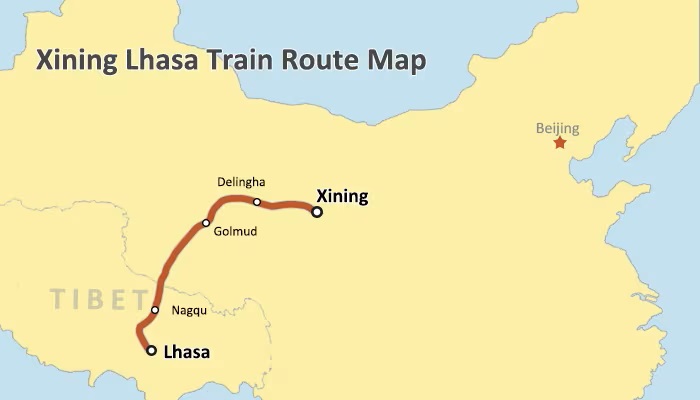
Xining → Lhasa Train Onboard Accommodations
There are three main classes on the Xining ti Lhasa trains:
Soft Sleeper (recommended for privacy & comfort)
- Private cabins with 4 berths and a sliding door; more peaceful; more space for luggage.
- Better for families, couples, or anyone prioritizing rest to mitigate altitude fatigue.
- Fewer tickets available — book early, especially in peak months.
Hard Sleeper (recommended for budget-conscious comfort)
- Open compartments with 6 berths each (upper, middle, lower).
- Very common and affordable; sociable atmosphere; more beds per car.
- Bring earplugs and a small blanket if you’re sensitive to noise or chills.
Hard Seat (cheapest, least comfortable)
- Daytime seating-only carriages; for short legs or extremely tight budgets only.
- Limited legroom and comfort; not recommended for overnight cross-plateau travel.
When choosing, remember: a good night’s sleep matters for acclimatization. If budget allows, a soft sleeper or at least a lower/middle berth in a hard sleeper is strongly preferable.
Practical Life on Xining → Lhasa Train
Luggage & storage
- Soft sleeper: suitcases slide under lower berths; small bags can go on overhead racks or in corners of the compartment.
- Hard sleeper: large suitcases go under the carriage luggage racks; smaller bags on upper racks or beside your berth.
- Hard seat: public luggage racks above the aisle; keep valuables with you.
Label your luggage and keep essentials (passport, permit and ticket, medications, face mask, water, snacks) in a small daypack that you can keep at your feet or under your seat.
Food & dining
- There is a dining car offering simple Chinese-style meals (rice/noodle dishes, soups, dumplings). Prices are reasonable compared with city restaurants; packed lunches and snacks are also commonly sold during meal trolleys.
- Pack your favorite light snacks, dried fruit, nuts, and any special diet items — international options become limited once you leave Xining.
- Avoid heavy alcohol intake on board: alcohol does not help acclimatization and can exacerbate altitude discomfort.
Toilets & washing
- Soft sleeper cars usually have a Western-style toilet plus a squat toilet; hard sleeper cars generally have squat toilets. Facilities are basic but functional. Carry hand sanitizer and toilet paper just in case.
Temperature & ventilation
- Trains are pressurized and relatively airtight. Cabin temperature control exists but conditions can feel dry; bring layers and a light sleeping bag liner for warmth.
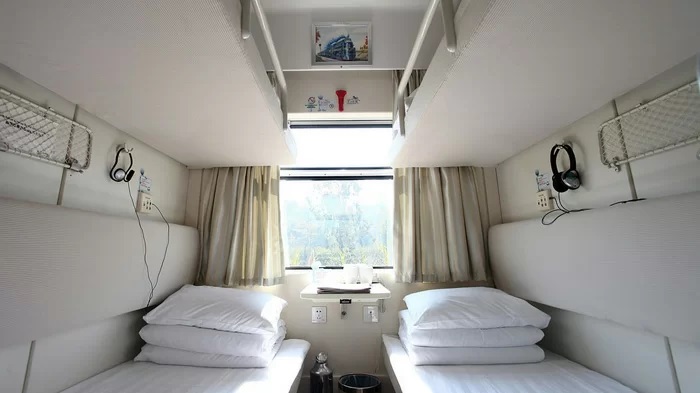
How the Train Helps with Higher-altitude Section
The Qinghai–Tibet Railway climbs from Xining’s plateau edge (roughly 2,200 m) to rail highs above 5,000 m at Tanggula. To make this climb safer and more comfortable, modern Tibetan trains have forced oxygen distribution in passenger cars and accessible oxygen outlets in sleeping cars.
- Oxygen is typically introduced throughout the cars as the train enters the higher-altitude section; conduits are available in soft sleeper cabins and common corridors.
- Conductors can supply short oxygen tubing if you have symptoms such as breathlessness or acute headache.
- Important: oxygen is an aid, not a cure. Use it sparingly and follow basic acclimatization measures: hydrate, move slowly, rest, and avoid heavy exercise for the first 24–48 hours after arrival.
Many first-time travelers report mild symptoms — headache, light breathlessness, or sleep disturbance — that resolve in 24–48 hours. Severe symptoms are rare but if you feel markedly worse, seek medical assistance at the next major stop or after arrival.
Scenic Highlights on the Train from Xining to Lhasa
If you can choose your side on the train, check which side gives the best views for each section — but remember that spectacular scenes can appear on both sides.
Yuzhu Peak (snow-capped summit)
As you depart Golmud and head west, you’ll often catch Yuzhu Peak (6,100+ m) on the horizon — a beautiful first glimpse of high alpine summits that signals you are entering seriously high terrain.
Kekexili (Hoh Xil) — the wildlife refuge
This enormous, windswept reserve is home to Tibetan antelope, wild yak, and other highland species. From late spring to summer you may glimpse antelope migrations — keep the camera handy and be respectful: these are protected ecosystems.
Tuotuo River (source of the Yangtze)
The Tuotuo (or headwater) river crossings and dramatic bridges are evocative: here you can literally witness the source rivers that will become China’s great Yangtze downstream.
Tanggula Pass and the railway’s highest point
The Tanggula pass area is the railway’s crown jewel: high-altitude plateaus, distant sharpened peaks, and, at the highest station, a brief stop where passengers disembark for photos with the Tanggula marker. The landscape feels lunar and magnificent; it’s a highlight for many travelers.
Nagqu / Nagchu grasslands
As the train descends into the Nagqu region, watch for wide, rolling pasturelands where nomadic herds of yaks and yak-cows graze — iconic Tibetan scenes that are deeply photogenic in late afternoon light.

How to Get Tibet Travel Permit and Boarding Documents
To travel into Tibet by rail you must hold a valid Tibet Travel Permit (not the standard Chinese visa). The permit is checked at the station before boarding; without it, boarding is not permitted.
- Who issues it: only authorized travel agencies in China can apply for the permit on your behalf.
- What you need to provide: passport personal page, Chinese visa page, and a recent passport-style photo. Processing times vary; allow at least two weeks prior to departure to be safe.
- Collection: many travelers have the paper permit and their train tickets delivered by their tour operator or pick them up at the station with documentation and booking confirmation.
If you do not already have a tour operator or agency assisting you, it’s highly recommended to secure one for permit processing, local transfers, and in-plateau logistics.
Booking Xining to Lhasa Train Tickets
- Book early. Tickets on these Xining→Lhasa trains sell quickly, particularly soft sleepers. Pre-sale windows and reserves (e.g., 15 days in advance on official channels) apply; tour operators often hold blocks of seats.
- Official channels vs agency: The official China railway website can sell tickets but requires local payment methods and sometimes Chinese-language navigation. Many international travelers use reputable local agencies to secure tickets and handle permit coordination.
- Ticket pickup: If you do not receive physical tickets before arrival in China, you can collect them at the Xining Railway Station with your passport, permit, and booking reference. Expect queues during busy seasons; arrive at least two hours early for ticket collection and security checks.
- Double-check details: When you receive a printed ticket, verify that your name and passport number match the permit and passport exactly; mismatches can prevent boarding.
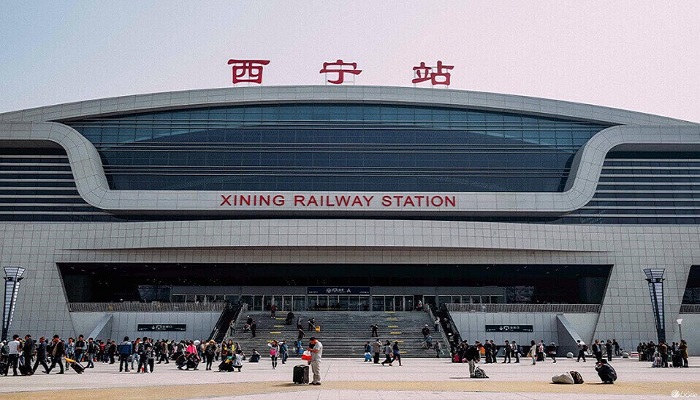
FAQs about Xining to Lhasa Trains
Q: Do I need a Chinese visa to travel to Tibet?
Yes — all foreign travelers must hold a valid Chinese visa. In addition, you need the Tibet Travel Permit to enter Tibet proper. The permit is issued by Chinese authorities through registered travel agencies.
Q: Is the oxygen supply on trains reliable?
Yes. Oxygen systems are built into the carriages, and conductors can assist. Use oxygen sensibly as an aid to comfort rather than a substitute for acclimatization.
Q: Are there medical facilities on the train?
No full medical clinics are present on board; conductors are trained for basic assistance. For anything serious, the nearest major town or hospital at the next stop would be required. If you have chronic conditions, consult your doctor before travel.
Q: Are train tickets refundable or changeable?
Refund and change policies depend on the timing and the ticket class. Refunds may carry penalties if requested close to departure. If booking through an agency, ask about their change/refund terms.
Q: Which side is best for photos?
Scenery can vary by section; for Tanggula and Tuotuo vistas, the left side (facing the direction of travel westward) often offers great views — but trains stop at multiple stations where you can step out briefly for photos at designated platforms.
Q: Can solo travelers join group cabins?
Soft sleepers provide private cabins if you book the entire compartment; otherwise, you may share berths with other travelers in hard sleeper cars. Many solo travelers find the hard sleeper sociable and manageable.
Arrive Prepared, Arrive Inspired
The Xining → Lhasa rail crossing is a once-in-a-lifetime experience for many travelers: engineering excellence, extraordinary alpine panoramas, and a gentle way to enter Tibet with time to acclimatize.
If you need help with booking, permit processing, or a tailored itinerary that pairs the train crossing with a smooth, safe first few days in Lhasa, China Dragon Travel specializes in Tibet rail logistics and local arrangements — from securing Tibet Travel Permits and train tickets to arranging transfers, hotels, and guided acclimatization-friendly sightseeing. Contact our team or visit our booking page and we’ll handle the paperwork and planning so you can simply enjoy the journey.



